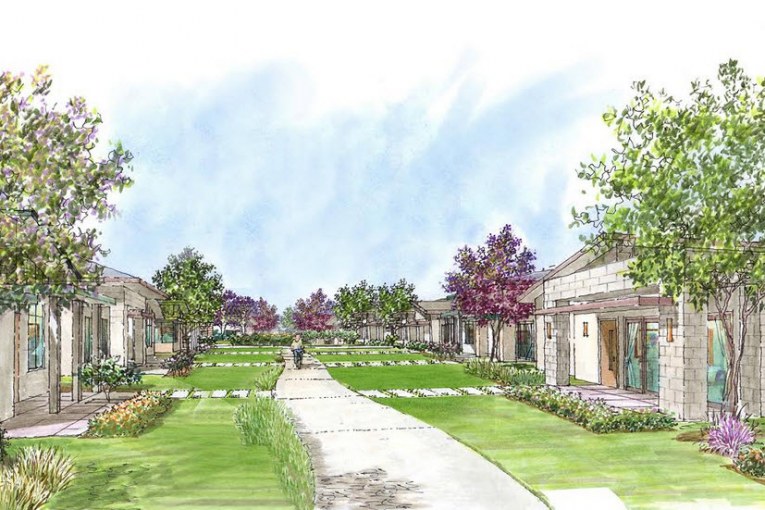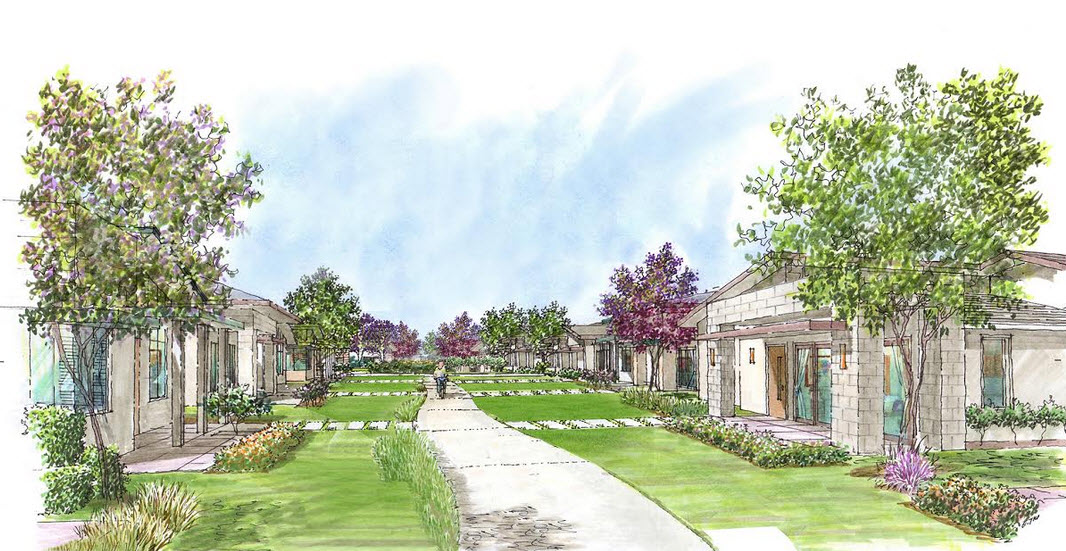

By David M. Greenwald
Nearly two years after the voters approved the West Davis Active Adult Community, Bretton Woods—the name given to the project development—looks to gain approval from the Planning Commission for its design review and site maps, which will allow the project to move forward to construction.
This request would allow for the creation and construction of 298 single-family residential lots out of 560 dwelling units envisioned in the project’s baseline. The remaining 262 units will be improved at the later phases of the project’s development. The current project entitlement applications will include all needed amenities and subdivision improvements as prescribed in the Baseline Features, Development Agreement, and Planned Development zoning for the Bretton Woods project.
The Vanguard spoke with applicant David Taormino, who noted that the project has taken four years to get to this point—two years to get to a vote and two years from the vote to get the point where construction might begin.
He noted that concerns about the slow growth forces and others criticizing projects slows down the project greatly. “They have to dot their ‘i’s’ and cross their ‘t’s’ not once or twice, not three  or four, but a dozen times. All that takes time,” he said.
or four, but a dozen times. All that takes time,” he said.
According to Taormino, the current proposal “looks almost identical to the original proposal.” He did say they moved the activities and wellness center design around to accommodate changes they saw coming into the market places. The number of cottages increased and the number of condos decreased.
“We are well within the magical number of units,” he said. They have taken the renderings and put details to it. The city made them remove their orchard—something that he lamented.
The staff report noted they recommend rejection of the planting of 424 dwarf fruit orchard trees. They would apparently replace them with oak trees, though residents would be allowed to plant fruit trees in their private yards.
“Other than that, it’s the same project,” he said.
He explained that this is the approval of the tentative maps—the type of details that are often done prior to the vote on a Measure J project, but by waiting until after, they were able to mitigate costs prior to approval of the project.
“Staff would prefer you do all this work and then go to an election,” Taormina explained. “Based on the history of projects being rejected, you’re talking three or four times as much expense to get to this point than to get to the election.”
Davis requires them to specify locations of trees and shrubs. “All of the costly details,” Taormina said.
The expectation at this point is that the Planning Commission would ask questions about details of the project, and they do have disagreements with the staff over the type of material that the paths are made of and the widths.
“We thought we had the widths and paths agreed to in June 2018,” he said. But now “staff wants to re-design the project and we are objecting strongly.”
He added, “The HOA and the owners are paying for maintenance that the city usually takes care of. They are not giving us enough credit for a significant amount of expense that is typical for example the Cannery versus what we’re providing that the home owners are paying for, therefore the city doesn’t have liability for any repairs so to speak of and as a result they should give us the leeway in terms of designing the material that benefit the people that are going to live there.”
So now it’s concrete versus asphalt paths.
The maps will not have to go back to the council, but the project still has to deal with the Davis-Based Buyer’s Program.
“At the end of September we will address the Buyer’s Program and calls for the Development Agreement,” he said. At that time, they will lay out the details about how it will work.
There will be a hearing on this in a few weeks before the Planning Commission. Then it will go to the City Council.
“It will comply with the requirements that we made that makes it not violate any housing discrimination laws,” he said. “There will be a special hearing on that issue.”
The DA calls for them to present a program and a reporting process that addresses housing discrimination concerns and details about how the program will work.
“I think people will find it consistent with promises and representations I made during the campaign,” he said.
—David M. Greenwald reporting







Concrete instead of asphalt. Why?
Oaks instead of fruit trees? Why not some of both? Over the years people have lamented that Village Homes wasn’t replicated. Now when someone comes forward with a proposal for community fruit trees the city says no.
Can think of two possible good reasons… less heat gain… and, depending on soil type, better durability, ‘repairability’, if the soils are expansive…
has tree davis weighed in? What of the tree, solar housing & aardvark committee?
Oaks and fruit trees aren’t interchangeable as to uses and benefits. Fruit trees are short-lived and high maintenance. Oaks provide far more shade, among other significant benefits. I seem to recall that the original plan called for an oak grove. There must be more to this part of the story that we aren’t getting here. Just my opinion: orchards in common areas aren’t a great idea. Fruit trees in back yards, or even in front yards, are great.
He noted that concerns about the slow growth forces and others criticizing projects slows down the project greatly. “They have to dot their ‘i’s’ and cross their ‘t’s’ not once or twice, not three or our, but a dozen times. All that takes time,” he said.
I’m going to defer to Bill Marshall’s professional experience regarding the above quote by Dave Taormino, but isn’t dotting “i’s” and crossing “t’s” the very definition of planning?
=============
With that question posed, I ran into the following Vanguard article Commentary: The Cannery Folks Are Abusing Process at This Point, which begins with the following first two paragraphs:
.
Arguably, isn’t “multi-bites at the apple when they have miscalculated or wished reconsideration of part of their plan” the very definition of failing to dot the “i’s” and cross the “t’s”?
With the SCamnnery, I wouldn’t be surprised if after-the-fact changes and coming back for multiple bites of the apple was their plan.
I’m sure the City learned its lesson and everything will be figured out in advance with no changes later.
#gag-me-with-a-spoon#
They can’t change that much because of the baseline features.
Weren’t they just trying to eliminate something major recently and replace it with something unrelated?
I haven’t been keeping score, but others have, and they tell me that many of the baseline features have been compromised at the Cannery. The development agreements are not written in stone and too often are reopened by City management. Which is one of the motivations for the Transparency in Government proposal that’s been put before the City Council. https://www.facebook.com/DavisCitizensforTransparentGovernment
Richard: Cannery was not a Measure J project and therefore baseline features are not protected like they are for a Measure J project.
David, I agree, so why did you say:
“Bretton Woods” as a name – a brand – would appear to many as a self-deprecation as this peripheral development is the embodiment of the post-war economic engine that’s encouraged car-dependency to the detriment of nearly all.
So far the only concrete thing they’ve done is cut down some amazing trees.
Despair, deceit and loss.
Stupid is as stupid does, and Davis voters are stupid.
Now wait a minute. Even the ones who vote the same way that you do??
I rise to Alan’s defense (altho’ he is fully capable for doing that)… I’d re-word it… a majority of Davis voters do not study, think, and act on informed, calculated judgement… many go by ‘sound-bites’, or ‘dogma’…